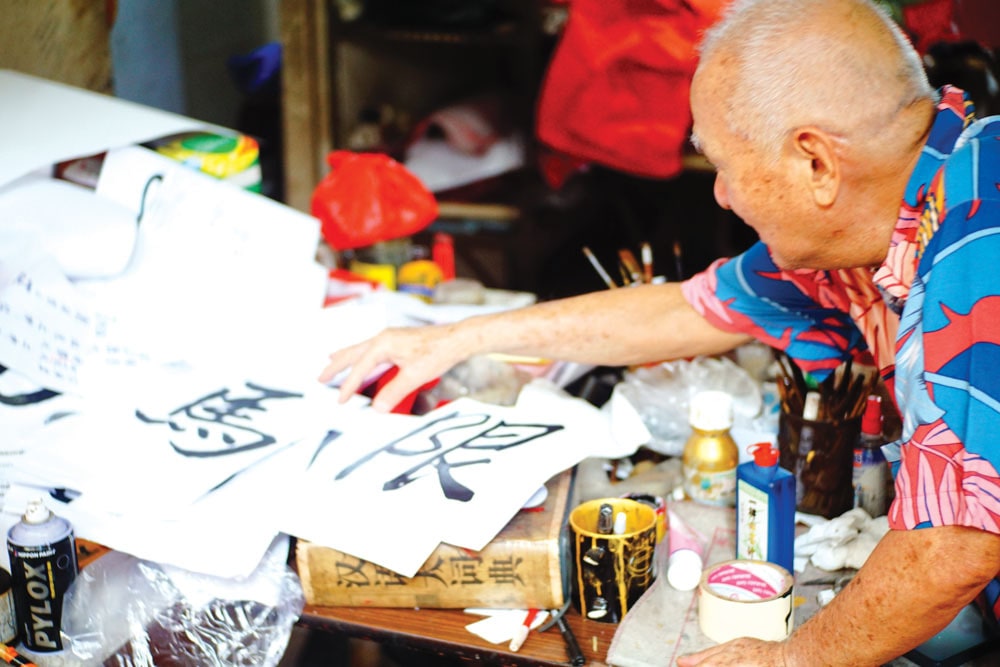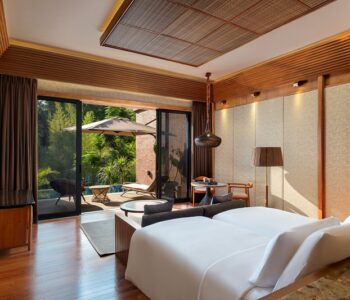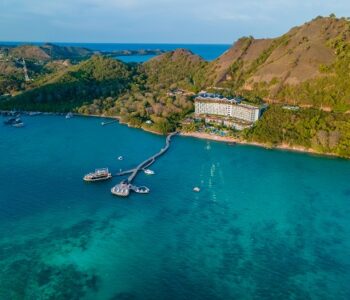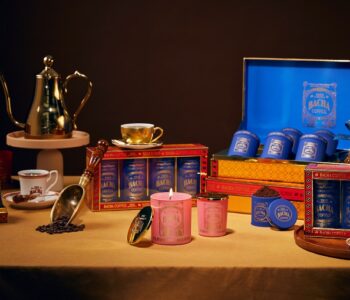
The Glodok Pancoran area in West Jakarta is a window into the Chinese culture beyond its homeland. Against a vibrant backdrop of cultural diversity, this bustling area offers a paradise of luscious food, heritage sites, colourful temples filled with incense, encounters with intriguing personalities, and enticing bargain hunts. Delving into the old buildings reveals the history of ancestors who struggled to survive in the land of Batavia.
The Glodok Pancoran area is part of Jakarta’s Old City and is considered the oldest Chinatown, or Pecinan, in Indonesia. This area was a defining characteristic of Batavia, i.e. Jakara under Dutch colonial rule, which started in the 17th century under Vereenigde Oostindische Compagnie (VOC). The history of the area is closely tied to the 1740 massacre of the Chinese community in Batavia.

The VOC, fearing the growing number of Chinese immigrants, did not allow them to live inside the main city. Instead, they built a new settlement for them outside the city walls of Fort Batavia. The Chinese had arrived in large numbers, opening sugar plantations, which became Batavia’s primary exports of sugar and arak (a distilled alcoholic drink) in that century. As Batavia prospered, more Chinese people arrived, becoming not only farmers but also traders, carpenters, fishermen, and plantation workers. This growth worried the VOC, as it became increasingly difficult to monitor the Chinese population outside Fort Batavia. The number of Chinese in Batavia increased from 3,101 in 1682 to 10,574 in 1739, prompting the VOC to issue strict regulations, including a quota for Chinese people allowed to be transported on junks (Javanese ancient sailing ships) from Banten to Batavia.
Friction between the VOC and the Chinese around Batavia intensified after the VOC lowered the price and production of sugar due to an abundant supply on the world market. This policy caused many Chinese coolies to lose their jobs. In response, Chinese farmers rebelled and marched towards the centre of Batavia, carrying homemade weapons. The aftermath of the rebellion saw thousands of Chinese homes looted and burned, and more than 1,000 Chinese were massacred by the VOC on 9 October 1740, in what is now known as Geger Pecinan. At that time, the Chinese settlement was located approximately north of Glodok, in the Kali Besar area. Following the massacre, the VOC built a new settlement outside Fort Batavia, which is the Glodok we know today.

Historian and journalist Alwi Shahab, in his work Glodok-Pancoran 1872, noted that the Glodok Pancoran area rapidly developed into the economic centre of Batavia by 1872. A river or canal connecting Glodok and Pancoran became a key transportation artery for boats carrying merchandise.
Since ancient times, the Glodok Pancoran area has been known as a hub for economic transactions and remains a lively place, bustling with community activities. For Jakarta residents, this area is famous for electronics shopping. The business centre that developed here was dominated by typical Chinese cuisine and traditional medicine shops. Unique Chinese dishes featuring proteins such as eel, cobra, and chicken with arak and ginseng can be enjoyed around Gang Gloria and in the Chinese food centre, now located in Pertokoan Chandra. This culinary gem has gained international fame as a centre for authentic Chinese food.

The Glodok Pancoran area also showcases strong Chinese cultural elements in its Cultural Heritage Buildings, including monasteries and temples. One of the oldest temples in Jakarta is Kim Tek Ie (Jin De Yuan) on Jalan Petak Sembilan. This temple was renamed Dharma Bhakti during President Soeharto’s era, as he forbade Chinese names. The temple, originally built in 1650 by Chinese Lieutenant Kwee Hoen and initially named Kwan Im Teng, was reportedly burned down during the 1740 massacre.
Other notable temples include the Dharma Jaya (Toa Se Bio), founded in 1714, and the Tanda Bhakti (Tan Seng Ong), built in 1900 by the Chinese association. Additionally, there is a church with Chinese architectural style in this area, the Santa Maria de Fatima Church, built in 1850. Originally the home of a Chinese captain surnamed Tan, it was later taken over by an Italian missionary named Matteo Ricci around the 1950s. Ricci, who had lived in China for about seven years, was sent by the Vatican to assist Chinese people facing discrimination in Batavia. The house was eventually converted into a Catholic church, which continues to serve the community today.

Although Glodok Pancoran has evolved into a bustling neighbourhood full of unique shops, its history is also marked by dark episodes. After Geger Pecinan, the area was targeted during the country’s riots in 1965 and 1998. Many authentic shops were destroyed and burned, leaving deep scars within the Chinese community. Some of the charred buildings were abandoned, as the traumatised shopkeepers chose not to return. However, many shops are still run by the next generation, some reaching the third and fourth generations.
Those who continue to do business in this area are often deeply connected to their ancestral heritage, feeling a responsibility to maintain the identity and culture of their forebears. For example, the legendary coffee shop and eatery Kopi Es Tak Kie is now run by the fourth generation, while Lalita Setiandi founded Lit Bakehouse, a small, neat, and clean cafe with ties to the family business that built the famous Tian Liong hardware store in 1935. Lalita, as the third generation, strives to introduce new business ventures in Glodok while honoring the place where she was born.

Glodok Pancoran offers much to explore. Those seeking Chinese prayer equipment can visit Toko Sukaria on Petak Sembilan, while those interested in Chinese calligraphy can head to Ko Akhwat, the last remaining calligraphy store in Glodok, on Petak Enam. For traditional Chinese medicine, stores like Chung Hwua, Hauw Hauw, and Obat Hidup offer a range of options. Of course, no visit would be complete without stopping by Pantjoran Tea House, where visitors can experience the most authentic Chinese tea and dining experience in Jakarta.
In June 2022, Glodok Pancoran was inaugurated as a Tourism Village by the Ministry of Tourism and Creative Economy (Kemenparekraf), promoting the area as a destination for culinary experiences, shopping, and learning about Chinese culture. That same year, the Chinese community in Jakarta came together to rebuild the gate that had been demolished by Japanese soldiers during the occupation of Indonesia. This gate, a symbol of unity, diversity, and prosperity, now welcomes travelers with the words “Welcome to Chinatown Glodok Pancoran,” inviting them to explore this living museum filled with fascinating stories and treasures to take home.






